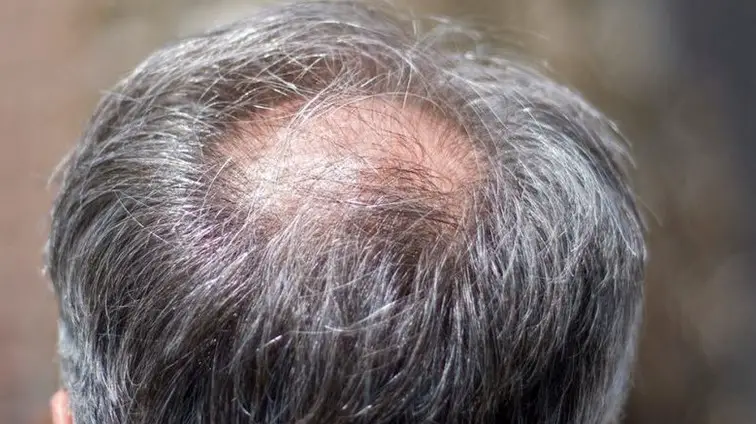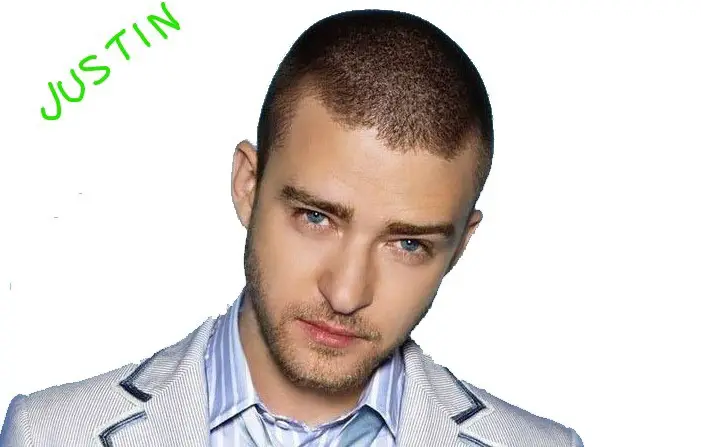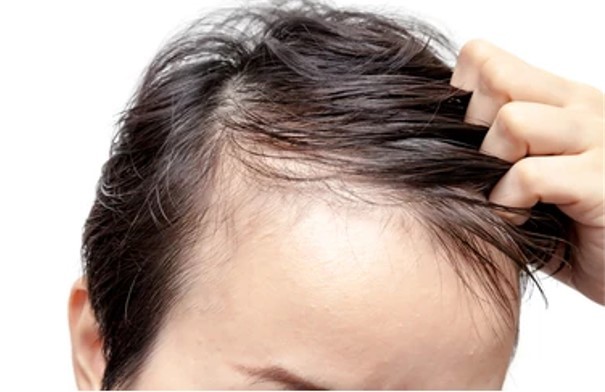Discover what a McDonald’s hairline is, its causes, and effective treatments. Learn about the memes and how to embrace or change your unique hairline.
In the world of hairlines, the term McDonald’s hairline often raises eyebrows and sparks curiosity. Characterized by a distinct ‘M’ shape resembling the iconic McDonald’s logo, this unique hairline has become a subject of memes, social media jokes, and even genuine concern. Understanding the intricacies of different hairline shapes is crucial, not just for aesthetic reasons but also for identifying underlying health conditions or genetic traits.
The importance of understanding your hairline extends beyond mere vanity. Different hairline shapes can indicate various health conditions, genetic predispositions, or even the natural aging process. For instance, a receding hairline could be an early sign of male pattern baldness, while a McDonald’s hairline might be a genetic trait without significant health implications. Therefore, gaining insights into the types of hairlines can empower individuals to take proactive steps in hair care and treatment.
In this comprehensive guide, readers will delve into the enigma that is the McDonald’s hairline. From its cultural significance to its underlying causes and potential treatment options, this blog post aims to be a one-stop resource for all your McDonald’s hairline queries. If you’ve ever wondered about the difference between a McDonald’s hairline and a receding hairline, this is the article for you. Don’t miss out on understanding this unique hairline shape and the treatment options available. Click to explore solutions that could change the way you look at your hairline forever.
Note: For a deeper understanding of receding hairlines, check out our detailed guide on What is a Receding Hairline? and Signs Of Balding At 20
What is a McDonald’s Hairline?
Definition and Characteristics
A McDonald’s hairline is a unique type of hairline that closely resembles the iconic ‘M’ shape of the McDonald’s logo. Unlike a typical straight or rounded hairline, this one has two peaks and a noticeable recession in the middle. It’s a hairline that stands out, and not always for reasons one might consider flattering.
The McDonald’s hairline is often confused with a receding hairline or a widow’s peak, but there are key differences. A receding hairline typically moves backward uniformly, while a widow’s peak forms a ‘V’ shape at the center of the forehead. In contrast, the McDonald’s hairline has a more complex ‘M’ shape, which can be both a genetic trait and a sign of hair loss in some cases.
The McDonald’s Hairline in Pop Culture
In the realm of social media and internet culture, the McDonald’s hairline has gained a certain level of notoriety. It’s the subject of various memes and jokes, often shared with a mix of humor and disbelief. The term “McDonald’s hairline girl” refers to viral images or videos of women sporting this unique hairline, while “McDonald’s hairline name” is often used in jest to describe individuals with this hairline shape.
The McDonald’s hairline has even inspired a range of memes featuring popular characters like Vegeta from Dragon Ball Z, who sports a similar ‘M’ shaped hairline. These memes often go viral, adding to the cultural significance of this unique hairline shape.
If you’ve noticed signs of a changing hairline and are concerned about what it means, don’t fret. Learn more about the Signs of a Receding Hairline and how it differs from a McDonald’s hairline. Take control of your hair health today by understanding the signs and seeking appropriate treatments.
Causes of McDonald’s Hairline
Genetics and Male Pattern Baldness
When it comes to the McDonald’s hairline, genetics often play a significant role. This unique hairline shape can be a hereditary trait passed down through generations. While it’s not always a sign of impending baldness, its appearance can sometimes be an early indicator of male pattern baldness.
The connection to male pattern baldness is particularly noteworthy. A McDonald’s hairline can evolve into a more pronounced receding hairline if it is part of a broader pattern of genetic hair loss. Understanding the role of genetics can help individuals take proactive steps in managing their hair health, especially if male pattern baldness is prevalent in the family.
Other Contributing Factors
While genetics lay the foundation, other factors like diet, stress, and lifestyle can also influence the shape and health of one’s hairline. Poor nutrition can lead to weakened hair follicles, while chronic stress has been linked to accelerated hair loss. Lifestyle choices such as smoking or excessive alcohol consumption can also have adverse effects on hair health.
It’s essential to consider these contributing factors when examining the causes of a McDonald’s hairline. A balanced diet rich in essential nutrients, stress management techniques, and a healthy lifestyle can go a long way in maintaining a robust hairline.
If you’re concerned about a receding hairline and wonder how celebrities manage to maintain their lush locks, check out our article on Male Celebrities with Receding Hairlines. Discover how they tackle hair loss and what you can learn from their experiences.
Treatment Options
Minoxidil for Hair Loss
One of the most popular treatments for hair loss is Minoxidil. Originally developed as a medication for high blood pressure, it was soon discovered that one of its side effects was hair growth. Minoxidil works by dilating blood vessels, thereby allowing more oxygen and nutrients to reach the hair follicles.
The effectiveness of Minoxidil varies from person to person. However, it has been clinically proven to slow down hair loss and, in some cases, even regrow hair. It’s particularly effective for treating receding hairlines and is often recommended as a first-line treatment.
Finasteride and Hair Growth
Another pharmaceutical option is Finasteride, a medication that inhibits the conversion of testosterone to dihydrotestosterone (DHT), a hormone linked to hair loss. The benefits of Finasteride include not only the slowing down of hair loss but also the promotion of new hair growth.
However, Finasteride comes with its own set of risks, including potential sexual side effects. When considering hair transplants for fixing a McDonald’s hairline, Finasteride is often recommended to maintain the newly transplanted hair.
LLLT for Hair Loss
Low-Level Laser Therapy (LLLT) is an emerging treatment for hair loss. LLLT uses red or near-infrared light to stimulate hair follicles, promoting growth and reducing hair loss. The question often arises: Is a McDonald’s hairline reversible with LLLT? While more research is needed, initial studies show promising results.
Other Treatments
Beyond pharmaceuticals and laser therapy, there are also natural remedies and surgical options. Natural treatments like essential oils and scalp massages can offer some relief, although their effectiveness is less proven. Surgical options include hair transplants and scalp reduction surgeries, which are more invasive but offer permanent solutions.
If you’re exploring treatments for a receding hairline, our guide on Minoxidil for Receding Hairline offers valuable insights. Discover how Minoxidil can be a game-changer in your hair loss journey. For those interested in the experiences of women with receding hairlines, don’t miss our article on Receding Hairlines in Women. Learn how women tackle hair loss and what options are available for them.
FAQs
Frequently asked questions often serve as a valuable resource for readers looking for quick answers to their most pressing concerns. In the context of a McDonald’s hairline, there are several questions that commonly arise.
What Causes a McDonald’s Hairline?
The causes of a McDonald’s hairline can be multifaceted. Genetics often play a significant role, but lifestyle factors such as diet, stress, and poor hair care can also contribute. Understanding the root cause is crucial for effective treatment.
How to Fix It?
Fixing a McDonald’s hairline depends on the underlying causes. If it’s genetic, options may be limited, but treatments like Minoxidil or Finasteride can help slow down hair loss and promote growth. Lifestyle changes, including a balanced diet and stress management, can also make a difference.
What Are the Treatment Options for a McDonald’s Hairline?
Treatment options for a McDonald’s hairline range from pharmaceutical solutions to surgical procedures. Minoxidil and Finasteride are commonly used medications, while Low-Level Laser Therapy (LLLT) is an emerging treatment. Surgical options like hair transplants offer a more permanent solution but come with higher risks and costs.
If you’re in your early 20s and concerned about a receding hairline, our article on Receding Hairline at 20 offers valuable insights. Discover how early intervention can make a significant difference in your hair health.
Conclusion and Takeaways
In wrapping up this comprehensive guide on McDonald’s hairline, it’s crucial to revisit the key points. Understanding the causes, from genetics to lifestyle factors, can empower individuals to take control of their hair health. Treatment options are diverse, ranging from pharmaceutical solutions like Minoxidil and Finasteride to emerging technologies like Low-Level Laser Therapy (LLLT).
The decision to embrace or treat a McDonald’s hairline is a personal one. For some, it may be a unique feature that adds character, while for others, it could be a source of insecurity. The good news is that there are various treatment options available, both natural and medical, to manage this unique hairline shape.
If you’re still unsure about the differences between a receding hairline and a widow’s peak, our article on Widow’s Peak vs Receding Hairline can offer further clarity. Discover how to distinguish between the two and what each means for your hair health.
References
For those who wish to delve deeper into the scientific and medical aspects of hair loss and its various treatment options, the following references are invaluable:
- Efficacy of Minoxidil: An in-depth study on the effectiveness of Minoxidil in treating hair loss, published on NCBI.
- Understanding Hair Loss: A comprehensive article from Medical News Today that covers the causes and treatments of hair loss.
- Chronic Stress and Hair Loss: A Harvard Gazette article that explores the link between chronic stress and hair loss.
- Receding Hairline Stages: Another insightful resource from StagesOfBalding.com that delves into the progression of a receding hairline.
- How to Tell if Your Hairline is Receding: A practical guide from StagesOfBalding.com that helps you identify the early signs of a receding hairline.
These references not only serve as a credible foundation for the information presented in this article but also offer avenues for further research and understanding.
- AI Powered Bald Filter Online 2024: See Yourself with No Hair! - January 19, 2024
- Harklinikken Bad Reviews 2024: Analyzing Negative Feedbacks - January 18, 2024
- How to Get the Alex Eubank Hair | Step-By-Step Tutorial 2024 - January 18, 2024










